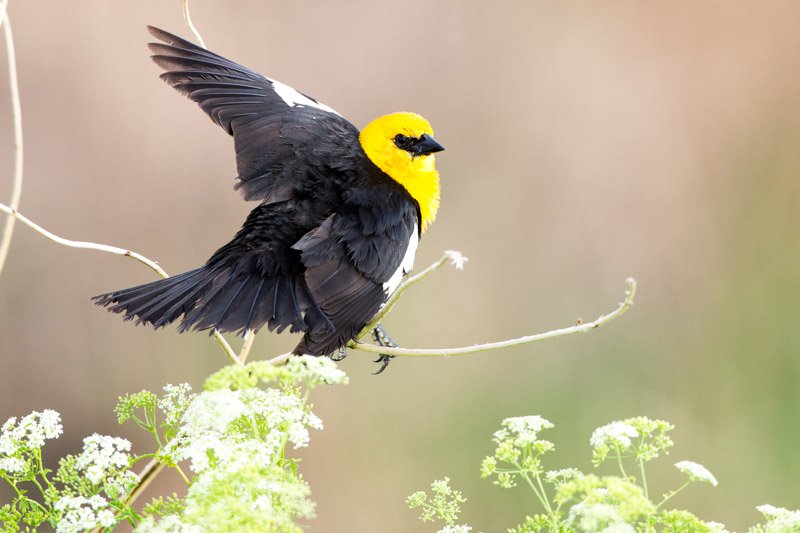









There are many different types and species of black birds. They are interesting, awful, distracting, and sometimes aggravating depending on what you are up to in the marsh. I will try to take you on a walk or hunt in our marsh and discuss some of the black birds that we see.
The most numerous are blackbirds and starlings. There are clouds of these birds, they cross the sky and fields almost constantly. They are crop-damaging machines. You can see these birds in all the fields, marshes and on roads and fences. They do damage crops and are a protected species since they migrate. I can remember several years ago when Senator Pat Roberts got some favorable attention in the press when he persuaded congress to allocate several hundred thousand dollars for “Blackbird Control in Kansas.” I never was able to determine how it was spent, and never saw any drop in blackbird numbers but I am sure it was a huge success... They are certainly doing very well at the present time. Feedlot operations lose significant amounts of feed to these birds and have utilized several innovative methods of control. Poison got a bad rap because other birds ate the grain also – imagine that.
The two blackbirds that we commonly see in the Bottoms are the Red-winged and the Yellow-headed blackbirds. They really are handsome birds and get lots of attention. I have far too many pictures of these guys- and I can’t throw any away. If you didn’t look for any other birds to entertain you in the marsh these will do it just fine.
Grackles are another species that hang in the Bottoms. They are larger and are generally cranky squawkers. The Great-tail and Boat-tail are our species. They strut around and the wind blows their tails about and almost tips them over. You can find them in the parking lot at Walmart also.
They fuss with each other a lot and sit in groups on pipes and perches at the Bottoms. Big bright eyes that see everything – they are busy!
When we get to the water in our marsh the birds are a bit more interesting. Most common is the Coot with a big white bill and black body. It is still hard for me to believe they migrate—it takes a huge amount of effort to get a running start on the take-off. The limit is 15 if you want to hunt them. I’m sure I have had Coot in a gumbo, but I have never hunted them for table food. Ducks and geese are just fine for my table. Coots are a constant companion when you take your duck boat into the marsh.
The Black Tern is one of the most elegant flying machines on this planet. They swoop at high speed and graze the surface for food. I am always grateful to see these little guys and can watch them for hours.
The White-faced Ibis looks black in low light, but they are actually a dark reddish-brown. There is also a Glossy Ibis that shows up on occasion, but the long curved bill of either species digging in the shallows for food is classic behavior. They are very elegant and one of my favorites.
There is a blackbird with a wicked bill that is common in our marsh called a cormorant. They are voracious fish eaters and spear the fish with that bill before swallowing them. I’m not sure how they swallow the bullheads with those horrible lateral fins—but they do. Northern fishermen really hate this bird because they take a bite out of the back of a salmon or other game fish and cause lots of damage. In the far east fishermen put a ring around the neck of a cormorant and let them dive to catch fish. The ring around their neck prevents them from swallowing the fish and it goes into the fishermans catch. National Geographic is so good.
There are other black birds around. There is a black rail that I have never seen. I’m sure the real birding folks are looking down their noses at my observations— I am grateful they don’t make a project out of correcting my information. I am grateful to all you guys and ladies that keep the birds of the world organized – the Ivory-billed woodpecker and 22 other species were officially designated as “extinct” this year. That is a tragic loss for our planet. Our birding community is the backbone of conservation efforts and I whole-heartedly recommend contributing to the organizations that make that happen. We as a nation should do more to protect these beautiful creatures. Our marsh is blessed with some of the best birds and birders on the planet.
Makes me humble and grateful!
Doc





